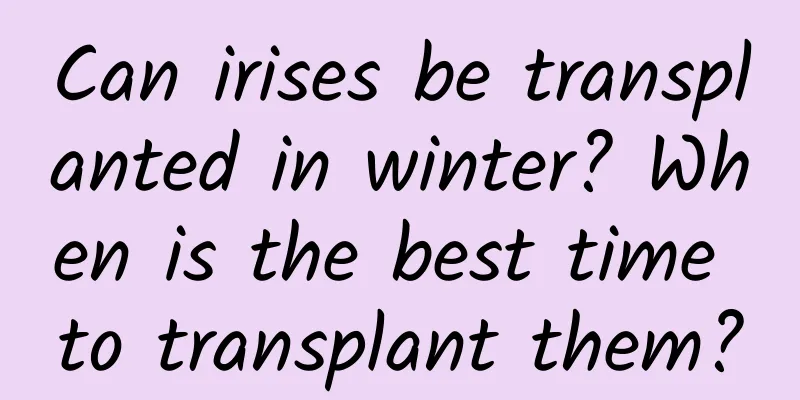What fertilizer is better for tea tree oil (what fertilizer is better for tea tree oil to grow faster)

|
The oil tea tree is an evergreen small tree belonging to the genus Camellia of the family Theaceae. It is a subtropical tree species unique to my country and one of the four major woody oil crops in the world. At present, the oil tea tree is the most important pure natural high-grade oil tree species in Zhejiang, Henan, Jiangxi, Guangxi and Hunan provinces. It is usually cultivated by grafting camellia seedlings. At present, the market price of tea oil is quite expensive, which is directly related to its scarcity. The geographical environment and management are particularly important for growing tea oil. The management of tea oil is relatively simple. Maintaining sufficient soil nutrients will basically ensure a good yield. What fertilizers are usually used for tea tree oil?Tea oil trees are most afraid of fertilizers containing chlorine, which will cause poor growth and deterioration in quality. ① The best nitrogen fertilizer to apply is ammonium nitrate, and ammonium chloride is prohibited . ② Potassium fertilizers generally used are potassium sulfate and potassium nitrate, and potassium chloride cannot be used . ③Ternary compound fertilizer generally uses potassium sulfate type compound fertilizer, and potassium chloride type compound fertilizer cannot be used . The main fertilizer for fertilizing tea oil trees is organic fertilizer, generally cake fertilizer, humus soil or decomposed farmyard manure, and nitrogen fertilizer is applied during the nutritional growth period. During the seedling stage of tea oil trees, decomposed human manure is usually applied. When it enters the fruiting period, nitrogen and potassium fertilizers are mainly used in combination with the application of triple compound fertilizer to promote flowering and fruiting. Principles and methods of fertilizing tea oil treesFertilizers can be divided into organic fertilizers, inorganic fertilizers, and microbial fertilizers according to their properties. Inorganic fertilizers can be further divided into nitrogen, phosphorus, and potassium macronutrient fertilizers and some medium- and trace-element fertilizers. During the growth process of tea oil, not only a large amount of fertilizer is needed, but also appropriate medium and trace elements. Reasonable combination of nutrients can create good conditions for the growth and development of oil tea, promote its healthy growth and increase yield. Studies have shown that the effect of combined application of nitrogen, phosphorus and potassium nutrients is significantly better than the cumulative effect of each single element. ①Young tea plantation stageFertilization of young forests should be based mainly on decomposed organic fertilizers, combining quick-acting fertilizers with slow-acting fertilizers, and organic fertilizers with inorganic fertilizers, so as to achieve better fertilization effects. ② Fertilization of mature camellia oleifera forestsDuring the peak fruit-bearing period of tea oil, nitrogen, phosphorus and potassium should be properly proportioned. Generally, the ratio of nitrogen, phosphorus and potassium is 10:6:8. There are several principles to be followed in fertilization: fertilize according to the mountain, fertilize according to the tree, fertilize according to the fertilizer, and fertilize according to the season. ③ Fertilization for transformation of low-yield camellia forestsMainly based on farmyard manure, it is carried out during winter reclamation. ④ Fertilizer methodThe root system of tea oil tree is well developed, with the absorbing roots mainly distributed in the soil layer of 5 to 30 cm and a dense area near the projection of the crown. The root system has obvious ability to drive water and fertilizer. Generally, a circular trench with a depth of about 20 cm and a width is dug along the inner edge of the tree crown projection, and fertilizer is directly applied into the trench. Then the soil is backfilled and covered. |
Recommend
Cattle breeding technology and feeding methods
my country has a long history of cattle breeding....
How to care for Amaryllis in winter
1. Keep warm Amaryllis cannot withstand the cold ...
What is the difference between the leaves of yellow jasmine and white jasmine?
1. Difference of blades 1. Difference in shape: T...
What are the methods and precautions for raising computer babies?
Computer baby growth habits Computer baby, also k...
Cultivation methods and precautions of Qingye Jasper
Green Leaf Jade is very easy to grow. Green Leaf ...
When is the best time to transplant wolfberry trees?
1. Transplanting time It is recommended to transp...
1 pot of Chlorophytum comosum can turn an old house into a mansion and save 100,000 yuan in renovation costs!
If you arrange your green radish like this, one p...
A complete guide to 9 methods of flower cuttings! Easily fill the pot!
Pineleaf Peony 1. Cut branches about 10 cm long a...
How to grow golden orchids
1. Breathable flower soil When growing golden orc...
Can dahlias survive the winter?
1. Can it survive the winter? Dahlia is a summer ...
How to grow lily of the valley well and how to prevent and control diseases
1. How to grow well 1. Suitable soil: Lily of the...
How to prune Impatiens and when to prune
1. Pruning time If you want Impatiens to grow bet...
Planting technology and management of high-yield pepper
Chili pepper is a vegetable that is in high deman...
How long does it take for green radish cuttings to take root?
1. How long does it take to take root? The growth...
The Feng Shui effect of pearl spider plant: placing it like this will bring good luck to the whole family!
bedroom Bedrooms are generally comfortable, clean...









